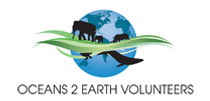WILDLIFE COMMUNITY
DURUMA TRIBE
 The Duruma are estimated to have a population of about 183,000 and are one of the Mijikenda, or "nine tribes" of the coastal ridge. The modern Duruma can be traced back to the 17th century, along with other Mijikenda groups, to the southern movement of Bantu-speaking peoples from Somalia. Having settled from around A.D. 500, as far north as Mogadishu, the expansions of the Somali, then the Oromo from the north pushed these people's back south. Many coastal people have a tradition of living together as family groups.
The Duruma are estimated to have a population of about 183,000 and are one of the Mijikenda, or "nine tribes" of the coastal ridge. The modern Duruma can be traced back to the 17th century, along with other Mijikenda groups, to the southern movement of Bantu-speaking peoples from Somalia. Having settled from around A.D. 500, as far north as Mogadishu, the expansions of the Somali, then the Oromo from the north pushed these people's back south. Many coastal people have a tradition of living together as family groups.
The Duruma were formed from the fusion of three separate groups, the Digo people from Kaya Kwale, who arrived first and built a Kaya at Mtswara. They were later joined by a group of refugee slaves, referred to as Mokua, who fled Mombasa. This appears to refer to a people originally from Mozambique, known today as Makhuwa. The third group were Kamba immigrants. It is also possible that remainder of other peoples have contributed to the modern Duruma.
The Duruma are a subsistence farming people who grow maize for their own consumption. They live in about 100 villages. They also herd cattle as a cash crop. Most children go to school but many older people are illiterate. They have maintained their own ethnic and language identity for several centuries since the early Bantu settlement.
 The Kaya is a sacred site in the forest, where special gatherings and rites of passage are held. It is the traditional tribal centre for the Mijikenda peoples, unique among north eastern Bantu.
The Kaya is a sacred site in the forest, where special gatherings and rites of passage are held. It is the traditional tribal centre for the Mijikenda peoples, unique among north eastern Bantu.
The languages of the Mijikenda are close to the major Bantu language of the East African coast, Swahili. Most Duruma also speak Swahili. Linguists classify the languages of the Duruma and the Rabai as two dialects of one language. Some Duruma also speak Digo.
The Duruma largely maintain their traditional family-village farming and herding life. But they may also be found as fishers and shopkeepers.








